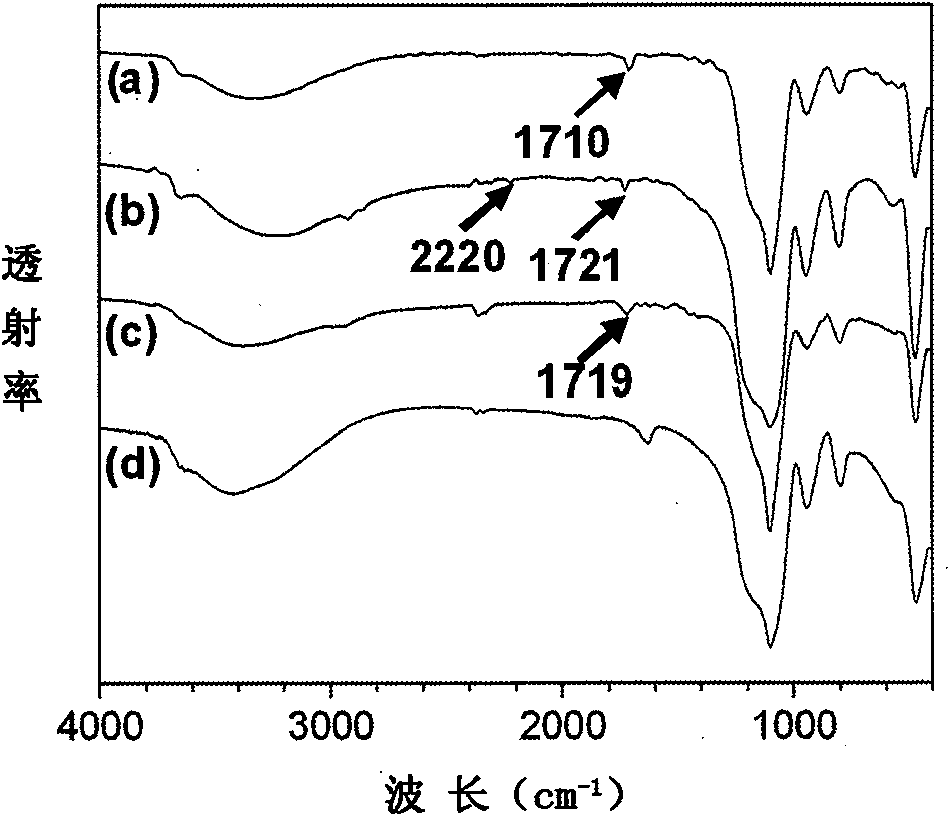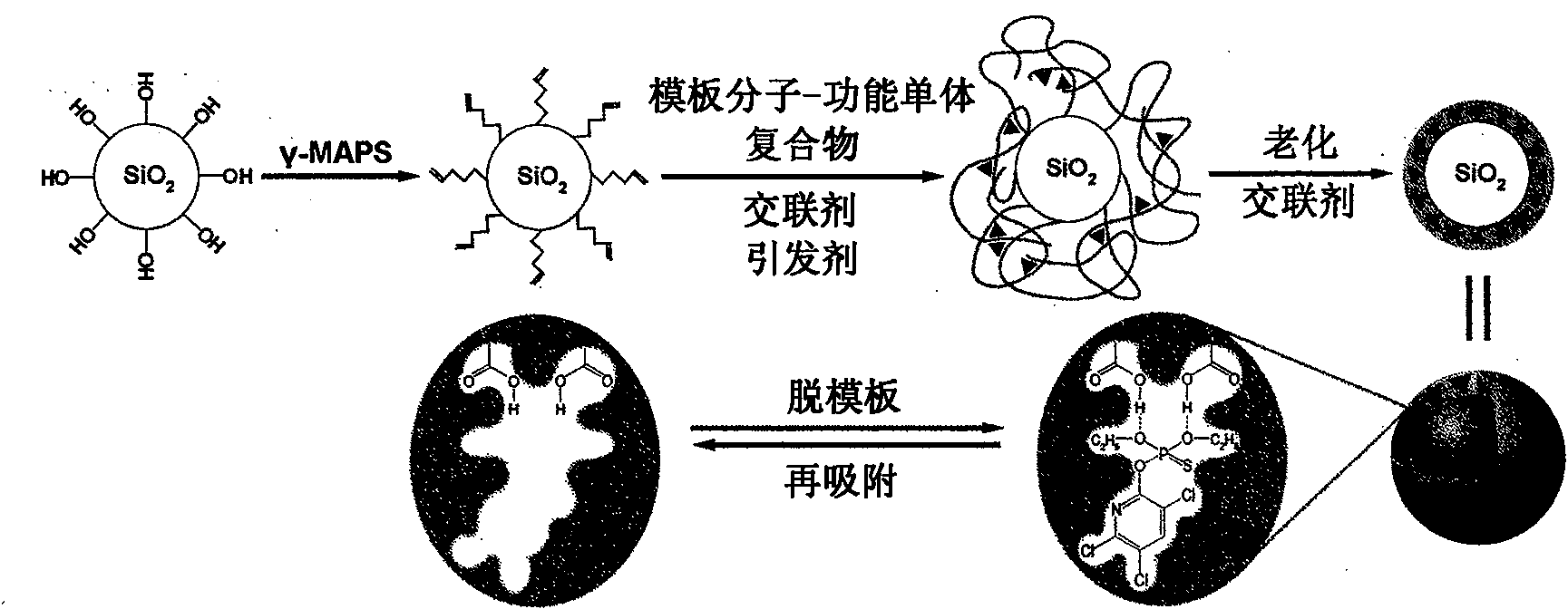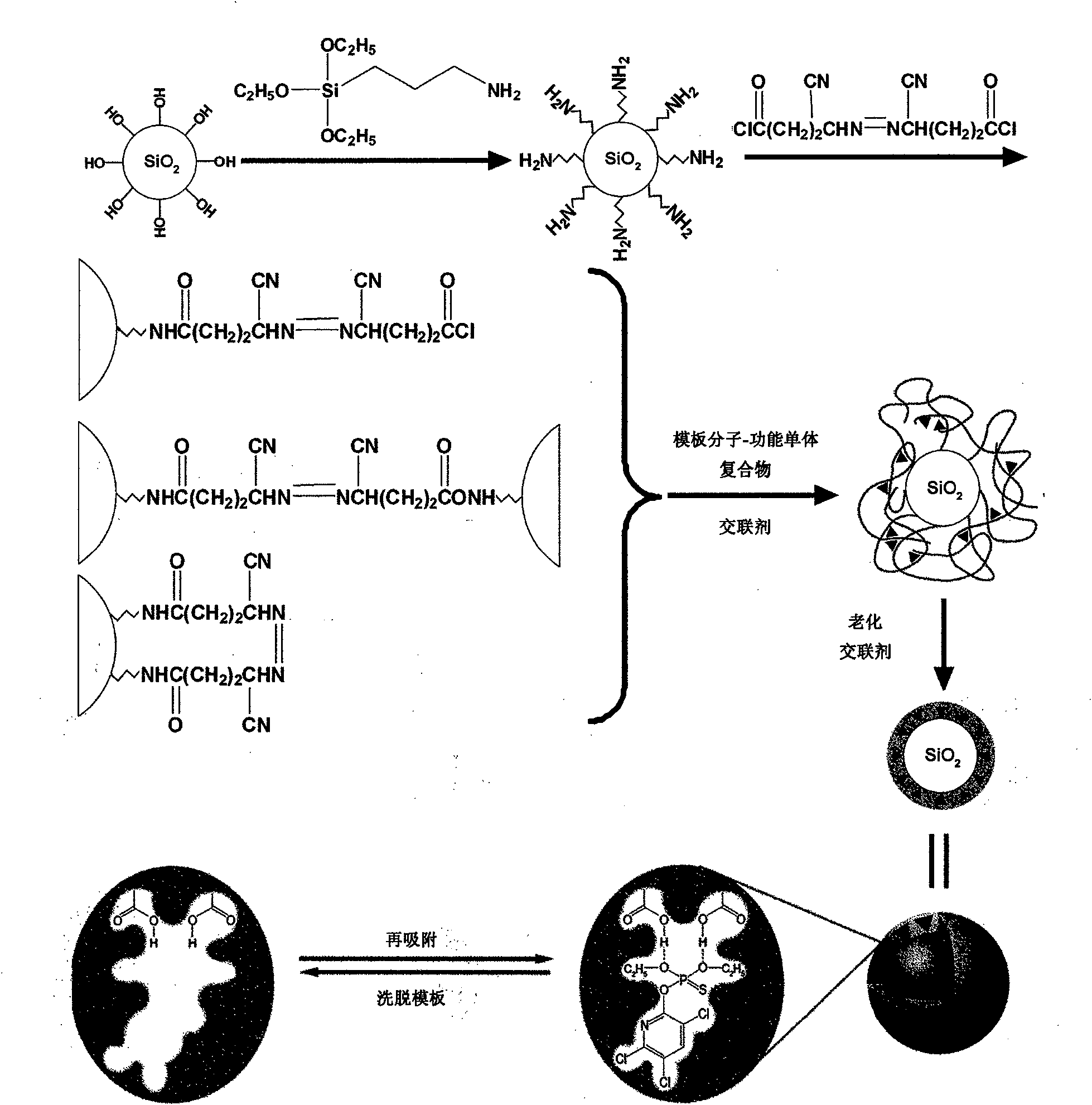Method for preparing organophosphorus insecticide nano silica gel surface molecular imprinted polymer
A technology of nano-silica gel and molecular imprinting, applied in alkali metal compounds, chemical instruments and methods, inorganic chemistry, etc., to achieve good molecular recognition performance
- Summary
- Abstract
- Description
- Claims
- Application Information
AI Technical Summary
Problems solved by technology
Method used
Image
Examples
Embodiment 1
[0024] Mix 50mL of absolute ethanol and 9mL of concentrated ammonia water to obtain solution A; then mix 5mL of TEOS and 30mL of absolute ethanol to obtain solution B; continuously drop solution B into a high-speed magnetic stirring tank at a rate of 15d / s at room temperature In solution A, the rotation speed was 700 rpm, and the stirring was continued for 24 hours after the dropwise addition; repeated ultrasonic washing with absolute ethanol until neutral, centrifuged, and vacuum drying at 60°C until constant weight. Obtain silica gel pellets of about 400nm.
[0025] The prepared SiO 2 Microspheres were placed in 50mL (10mol L -1 ) hydrochloric acid solution, acidified for 24 hours, washed repeatedly with ultrapure water to neutrality, centrifuged, placed in a vacuum oven, and dried to constant weight at 60°C; weighed the acidified SiO 2 Ultrasonic dispersion of 0.5 g of microspheres in a certain amount of toluene solution, adding 10 mL of γ-MPTS so that the volume concentr...
Embodiment 2
[0029] Mix 50mL of absolute ethanol and 9mL of concentrated ammonia water to obtain solution A; then mix 5mL of TEOS and 30mL of absolute ethanol to obtain solution B; continuously drop solution B into a high-speed magnetic stirring tank at a rate of 15d / s at room temperature In solution A, the rotation speed was 700 rpm, and the stirring was continued for 24 hours after the dropwise addition; repeated ultrasonic washing with absolute ethanol until neutral, centrifuged, and vacuum drying at 60°C until constant weight. Obtain silica gel pellets of about 400nm.
[0030] The prepared SiO 2 Microspheres were placed in 50mL (10mol L -1 ) hydrochloric acid solution, acidified for 24 hours, washed repeatedly with ultrapure water to neutrality, centrifuged, placed in a vacuum oven, and dried to constant weight at 60°C; then weighed the acidified SiO 2 Ultrasonic disperse 0.5g of microspheres in a certain amount of toluene solution, add 10mL of γ-APTS to make the volume concentration...
Embodiment 3
[0035] Mix 50mL of absolute ethanol and 9mL of concentrated ammonia water to obtain solution A; then mix 5mL of TEOS and 30mL of absolute ethanol to obtain solution B; continuously drop solution B into a high-speed magnetic stirring tank at a rate of 15d / s at room temperature In solution A, the rotation speed was 700 rpm, and the stirring was continued for 24 hours after the dropwise addition; repeated ultrasonic washing with absolute ethanol until neutral, centrifuged, and vacuum drying at 60°C until constant weight. Obtain silica gel pellets of about 400nm.
[0036] The prepared SiO 2 Microspheres were placed in 50mL (10mol L -1 ) hydrochloric acid solution, acidified for 24 hours, washed repeatedly with ultrapure water to neutrality, centrifuged, placed in a vacuum oven, and dried to constant weight at 60°C; then weighed the acidified SiO 2 Ultrasonic disperse 0.5g of microspheres in a certain amount of toluene solution, add 10mL of γ-APTS to make the volume concentration...
PUM
 Login to View More
Login to View More Abstract
Description
Claims
Application Information
 Login to View More
Login to View More - R&D
- Intellectual Property
- Life Sciences
- Materials
- Tech Scout
- Unparalleled Data Quality
- Higher Quality Content
- 60% Fewer Hallucinations
Browse by: Latest US Patents, China's latest patents, Technical Efficacy Thesaurus, Application Domain, Technology Topic, Popular Technical Reports.
© 2025 PatSnap. All rights reserved.Legal|Privacy policy|Modern Slavery Act Transparency Statement|Sitemap|About US| Contact US: help@patsnap.com



